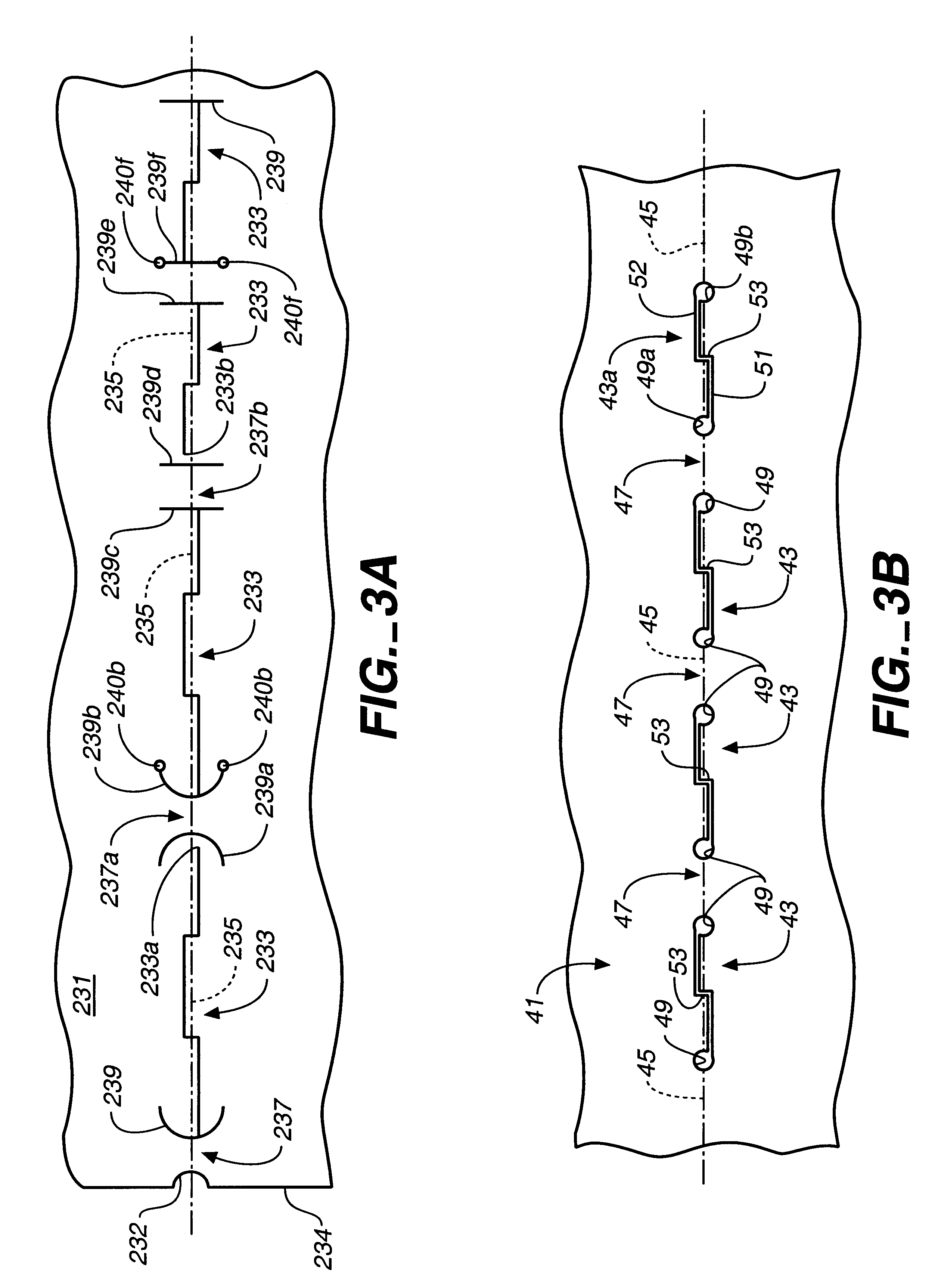Method for precision bending of a sheet of material and slit sheet therefor
a technology of slit sheet and material, which is applied in the direction of metal-working feeding device, forging/pressing/hammering apparatus, handling devices, etc., can solve the problems of accumulation of tolerance errors, difficult control of bend locations, and significant cumulative tolerance errors in bending, so as to reduce stress concentration and reduce stress concentration.
- Summary
- Abstract
- Description
- Claims
- Application Information
AI Technical Summary
Benefits of technology
Problems solved by technology
Method used
Image
Examples
second embodiment
a stress reducing structure is shown in FIG. 3A. A sheet of material 231 is formed with a plurality of aligned longitudinally extending slits 233 extending along a bend line 235. Slits 233 are transversely stepped in a manner which will be described in more detail hereinafter.
Positioned at the adjacent ends of slits 233 are stress reducing structures 239, which in the embodiment of FIG. 3A are provided as transversely extending slits. In the most preferred form of slit-based stress reduction structure 239 the slits are transversely extending arcuate slits, such as shown by slits 239a and 239b. As will be seen, these arcuate slits curve back along the respective longitudinally extending slits 233 to which they are connected. Thus, the stress reducing arcuate slits are convex in a direction facing intermediate bending webs 237 and 237a. Bending webs 237 are defined by an arcuate notch 232 at edge 234 of sheet 231 and the adjacent arcuate stress reducing slit 239, or by pairs of slits ...
PUM
| Property | Measurement | Unit |
|---|---|---|
| Thickness | aaaaa | aaaaa |
| Shape | aaaaa | aaaaa |
| Width | aaaaa | aaaaa |
Abstract
Description
Claims
Application Information
 Login to View More
Login to View More - R&D
- Intellectual Property
- Life Sciences
- Materials
- Tech Scout
- Unparalleled Data Quality
- Higher Quality Content
- 60% Fewer Hallucinations
Browse by: Latest US Patents, China's latest patents, Technical Efficacy Thesaurus, Application Domain, Technology Topic, Popular Technical Reports.
© 2025 PatSnap. All rights reserved.Legal|Privacy policy|Modern Slavery Act Transparency Statement|Sitemap|About US| Contact US: help@patsnap.com



